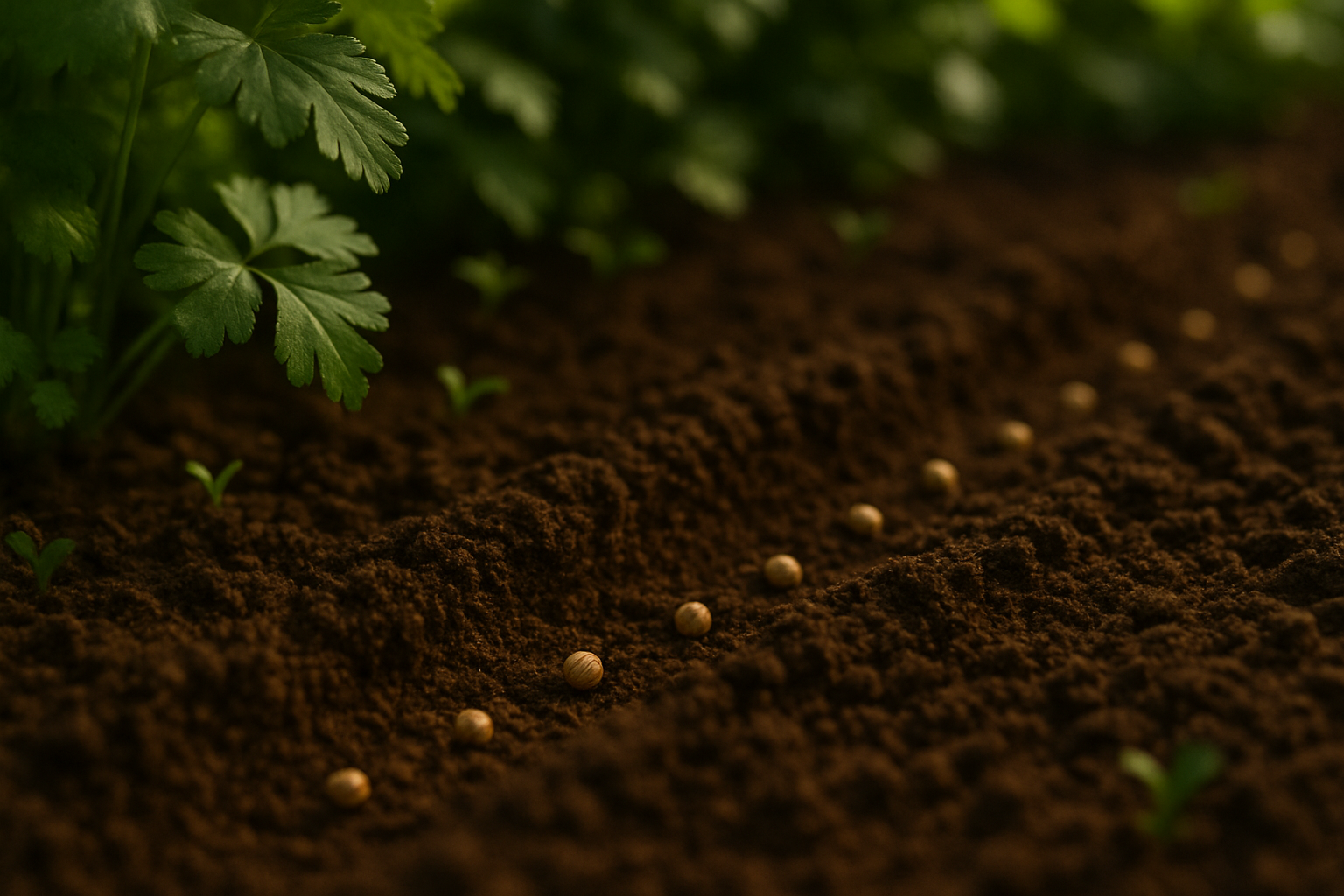Introduction to Planting Cilantro Seeds
Knowing the right cilantro seed depth is the first step to growing this delicious and versatile herb at home. Cilantro, also known as coriander, adds a fresh, vibrant flavor to everything from tacos to curries, making it a must-have in any herb garden. But if you’re just scattering seeds on the surface or planting them too deep, you might miss out on strong, healthy plants.
Getting the planting depth right is crucial—not only does it affect how quickly your cilantro seeds sprout, but it also influences the strength of the seedlings and the final harvest. In this beginner-friendly guide, we’ll break down exactly how deep you should plant cilantro seeds, with tips to avoid common mistakes like overcrowding or inconsistent watering.
We’ll also discuss how planting depth can impact germination time and offer practical advice for both indoor pots and outdoor garden beds. By the end, you’ll know how to set your cilantro up for success from day one and enjoy a bountiful harvest, whether you’re growing for kitchen use or a fresh supply of leafy greens all season long.
Understanding Cilantro’s Growing Preferences
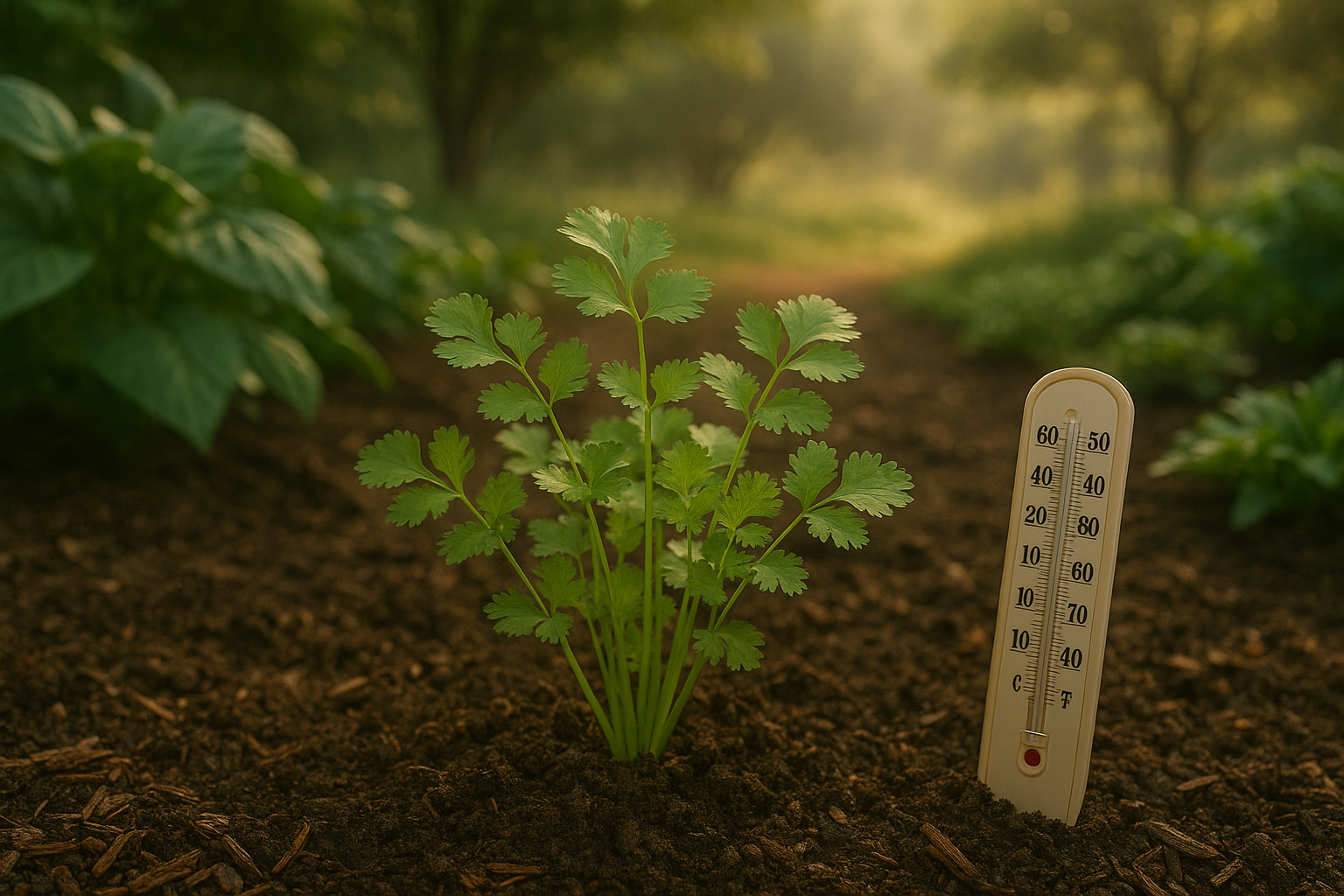
Cilantro, also known as coriander, thrives best when given a little extra attention to its basic growing needs. Start with soil—this herb prefers well-draining, loamy soil rich in organic matter. Heavy clay or sandy soil can hinder its growth and stem development, so mixing in compost or aged manure before planting can make a world of difference.
Sunlight is crucial; cilantro loves full sun, ideally 4–6 hours a day, but in regions with scorching summers, opt for a bit of afternoon shade to prevent early bolting (when the plant flowers too soon). Temperature plays a big role as well; cilantro grows best in cooler weather, from about 50°F to 75°F (10°C to 24°C). High heat will cause the plant to bolt, shortening your harvest window.
As for water, keep the soil evenly moist but never soggy, as cilantro doesn’t tolerate waterlogged roots. Mulching can help retain moisture and keep roots cool.
When planting cilantro seeds—which are actually tiny seed pods containing two seeds each—keep in mind their small size and moderate germination rate. Sow them just ¼ inch deep and space seeds about 1–2 inches apart. Press the soil gently so the seeds make good contact without being buried too deeply, as they need some light to encourage sprouting.
Higher moisture and warmth can speed up germination, but be patient—it often takes 7–10 days before seedlings emerge. By aligning your planting depth and approach with these preferences, you’ll set the stage for a healthy, flavorful cilantro harvest.
How Deep Should You Plant Cilantro Seeds?
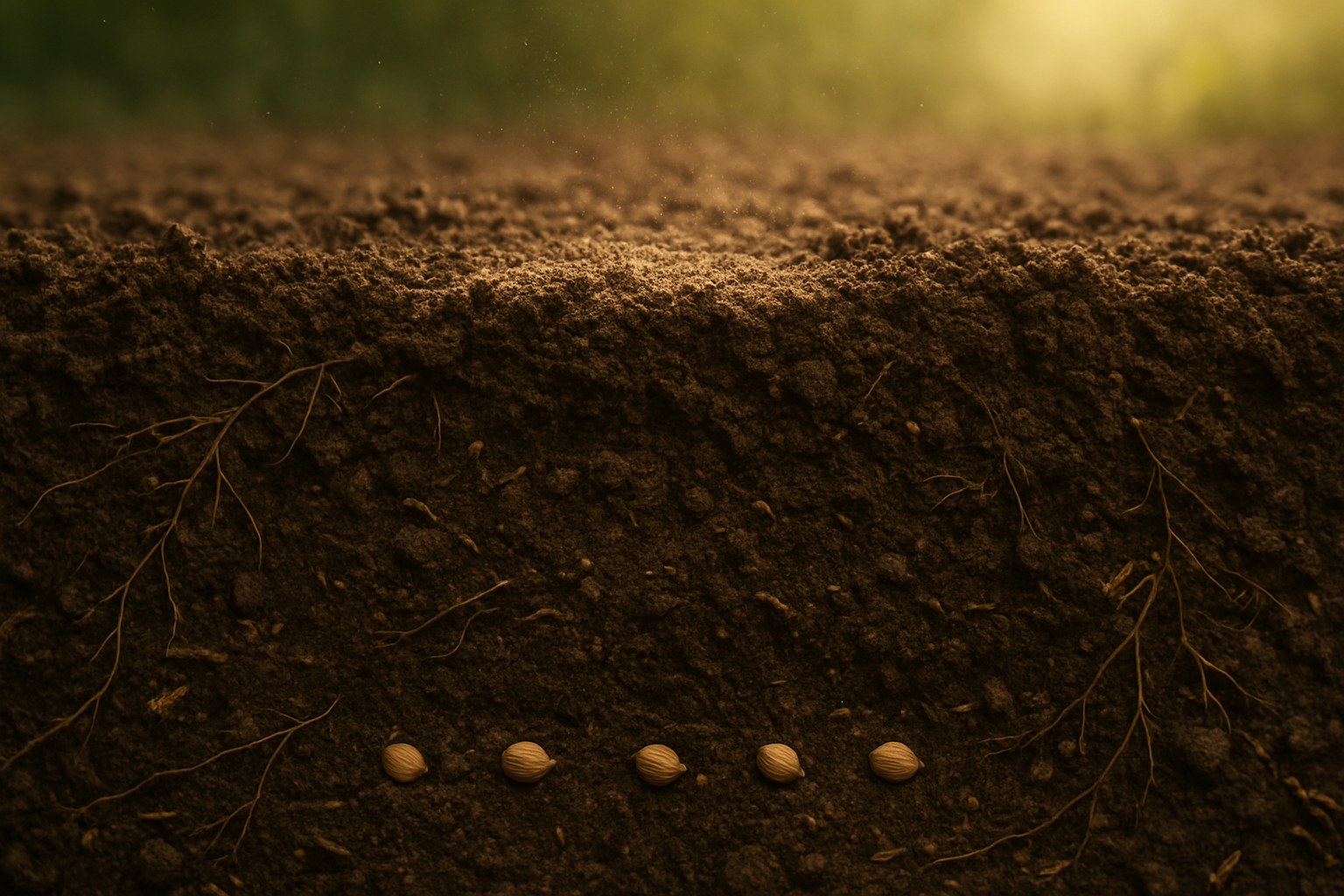
Cilantro seeds should be planted at a depth of 1/4 to 1/2 inch for the best results. This depth allows the seeds to access enough moisture without being buried so deep that they struggle to reach the surface.
If cilantro seeds are planted too shallow, they can dry out quickly or get washed away during watering or rain, leading to poor germination. On the other hand, planting seeds too deep can prevent the delicate sprouts from breaking through the soil, slowing their growth or stopping it entirely.
To plant cilantro seeds correctly, start by loosening your soil and making shallow furrows about 1/4 to 1/2 inch deep using a finger or gardening tool. Drop seeds about one inch apart along the furrow. Next, gently cover the seeds with a thin layer of soil—just enough so you no longer see them, but not so much that the soil is packed down tightly.
It’s important not to press the soil too much, as cilantro seeds need a bit of air to germinate. After planting, water the area carefully with a gentle spray or watering can to avoid washing away the seeds. Keep the soil evenly moist, but not soggy, during the entire germination period, which usually takes 7 to 10 days.
In hot, dry weather, you may need to water every day or cover the seeded area with a light row cover to retain moisture. As soon as seedlings appear, thin them if needed, and continue watering regularly to help young cilantro plants establish strong roots.
By following these simple steps, you’ll give your cilantro the best chance for a healthy start.
Timing and Location
Cilantro thrives best when sown during the cooler parts of the growing season, making early spring and late summer the ideal times for outdoor planting in most temperate regions. If you’re planting indoors, cilantro can be grown year-round as long as it gets enough light—choose a sunny windowsill or use a grow light for at least 4-6 hours of sunlight daily.
Outdoors, cilantro does well in well-drained soil in raised beds, directly in the ground, or in containers that are at least 8 inches deep. Space your seeds about 1-2 inches apart in the row and keep rows about 12 inches apart to give the plants room to spread out and ensure good air circulation. For containers, scatter seeds thinly and thin seedlings to avoid overcrowding.
Cilantro is quick to bolt (flower and go to seed) in hot weather, so if you want fresh leaves over a longer period, try succession planting: sow a new batch of seeds every two to three weeks to maintain a steady supply. A little afternoon shade can help in hotter climates to extend the leaf-harvest period, as can choosing a partially shaded spot for containers or beds.
Remember to keep the soil consistently moist but not soggy, as cilantro doesn’t like to sit in water. With these tips, you can enjoy fresh cilantro in your kitchen for most of the year, no matter the size of your garden or your climate.
Caring for Cilantro Seedlings After Planting
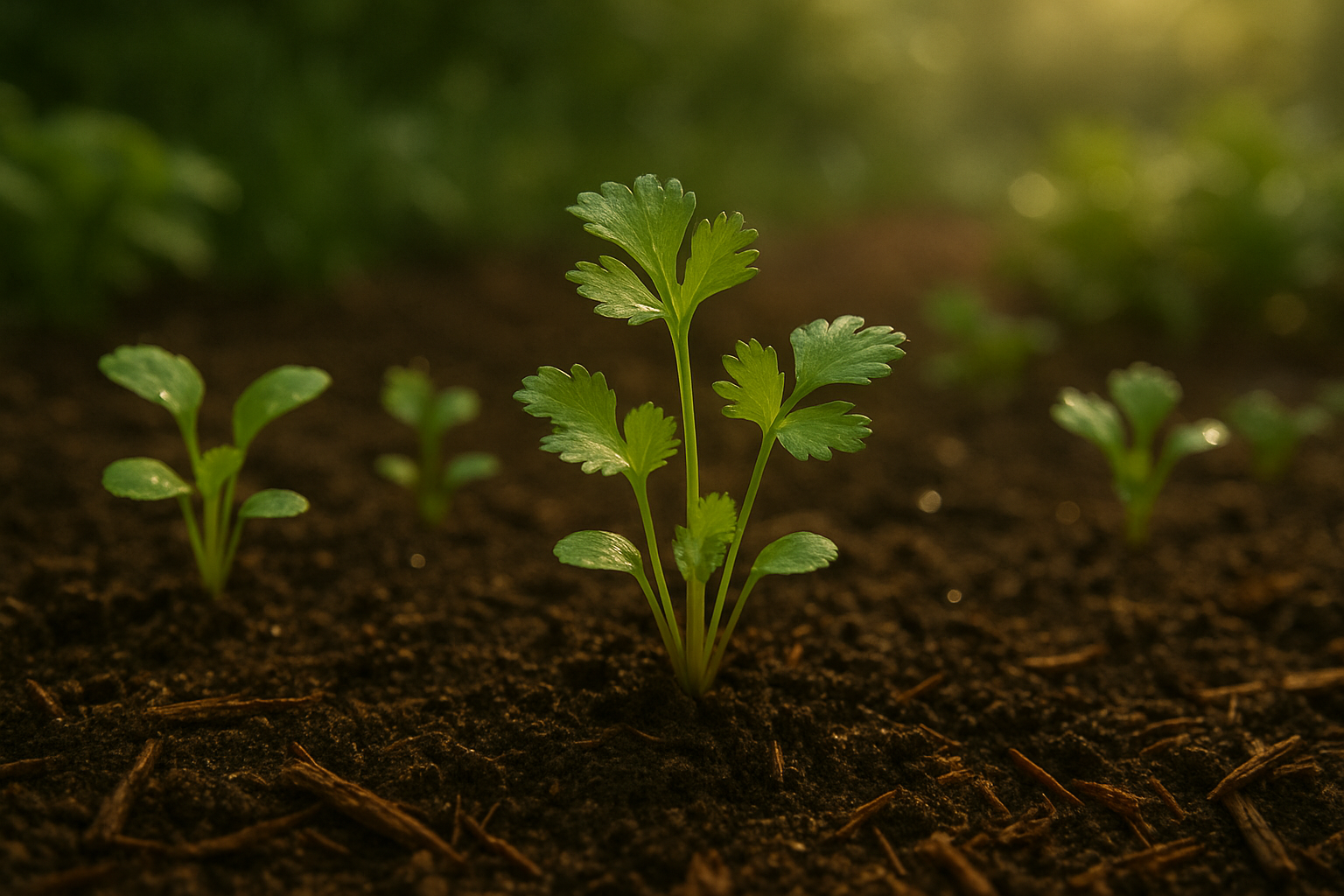
Once your cilantro seeds have sprouted—usually within 7 to 10 days—you’ll notice delicate green shoots emerging from the soil. These seedlings initially display small, rounded cotyledon leaves, quickly followed by true leaves that resemble the familiar feathery cilantro foliage.
As the seedlings grow to about two inches tall, it’s important to thin them to prevent overcrowding. Aim to space each plant about 4 to 6 inches apart. This spacing gives the roots room to expand and improves airflow, reducing the risk of disease. Use clean scissors to snip extra seedlings at the soil line rather than pulling them out, which protects the roots of neighboring plants.
Water your cilantro seedlings regularly, keeping the soil consistently moist but not soggy—overwatering can cause damping off or root rot. It’s best to water in the early morning so any moisture on the leaves dries quickly.
Cilantro thrives in fertile soil, so once the seedlings develop their first true leaves, apply a diluted, balanced liquid fertilizer every two weeks to boost growth. Just avoid overfeeding, as too much nitrogen can result in lanky plants.
Watch for early signs of trouble: struggling seedlings may appear yellowed, wilted, or stunted, while healthy plants stand upright, are bright green, and grow quickly. To keep pests like aphids at bay, inspect the leaves regularly and gently wash them off with water.
To prevent disease, avoid letting water splash from the soil onto leaves and maintain space between plants to ensure good air circulation. With attentive care, your cilantro seedlings will soon be thriving and headed for a flavorful harvest.
Common Mistakes to Avoid When Planting Cilantro Seeds
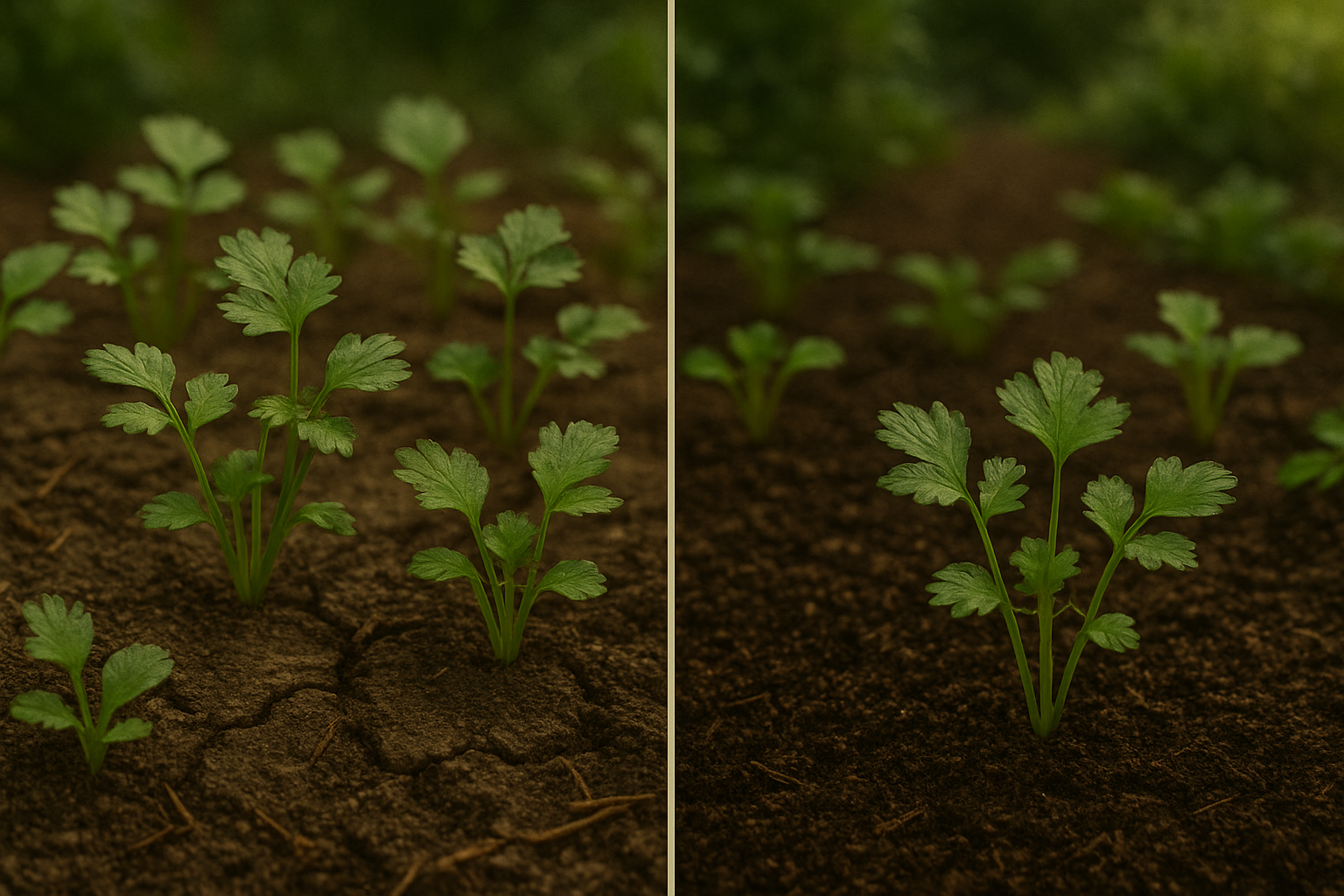
Planting cilantro seeds may seem straightforward, but avoiding a few common mistakes can make all the difference. Many beginners sow seeds too deep—a shallow depth of about 1/4 inch is best to ensure seeds get enough light and warmth to sprout.
Overcrowding is another frequent error; cilantro plants need space to spread out, so thin seedlings to at least 6 inches apart once they sprout.
It’s also important to keep the soil consistently moist, especially during germination. If the soil dries out, seeds may fail to sprout or grow slowly.
Planting in overly hot or freezing conditions can also hinder growth, as cilantro prefers cooler temperatures between 50–75°F.
If you notice poor germination, double-check your seed depth and moisture levels, and consider soaking seeds briefly in water before planting to speed things along.
Slow growth is often due to compacted or poor-quality soil—amend with compost and avoid heavy clay.
Remember, cilantro can be sensitive and sometimes unpredictable, so don’t be discouraged by setbacks. Try different planting times and methods until you find what works best in your garden; patience and experimentation are key to growing lush, flavorful cilantro.
Conclusion & Quick Reference Tips
Getting the seed depth just right is key to growing a healthy cilantro crop—plant seeds about 1/4 to 1/2 inch deep for optimal results. Remember, keeping the soil consistently moist but not soggy helps seeds sprout more reliably. Once your cilantro is established, avoid letting the soil dry out completely, and be sure to thin the seedlings for better airflow.
Below are some core tips to get you started quickly and successfully:
- Plant cilantro seeds 1/4–1/2 inch deep in loose, well-draining soil
- Keep soil evenly moist until seeds germinate (usually in 7–10 days)
- Thin seedlings to 4–6 inches apart to prevent overcrowding
- Harvest leaves regularly to encourage new growth
- Provide partial shade in hot climates to prevent bolting
With these steps, you’ll be well on your way to growing flavorful cilantro right at home—no green thumb required! Give it a try and enjoy fresh herbs whenever you need them.
